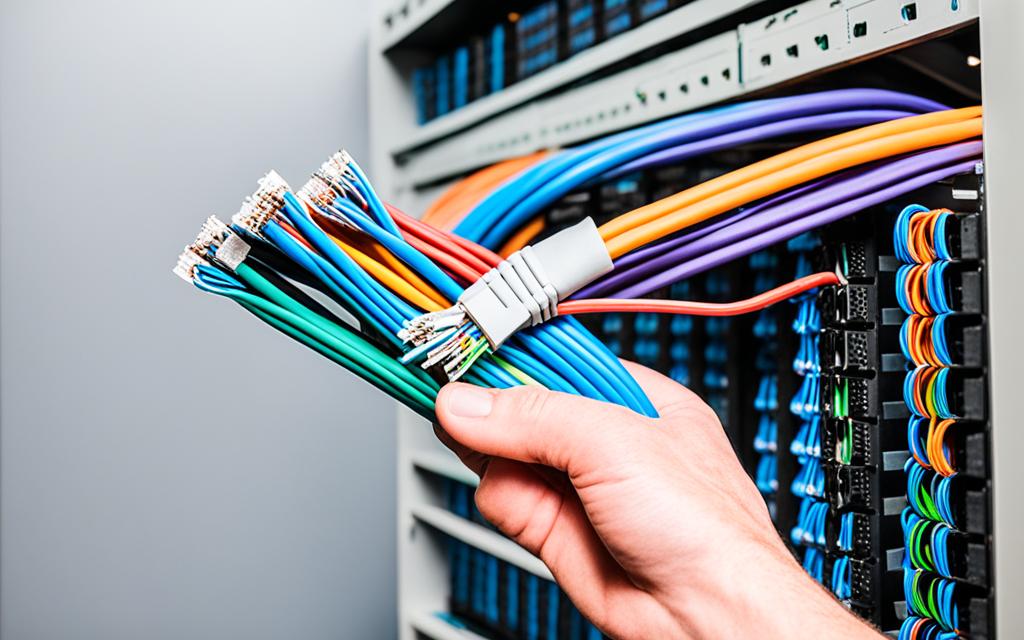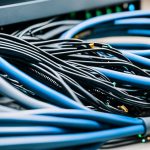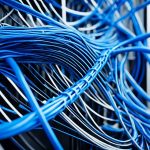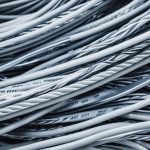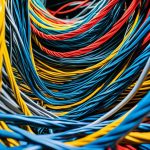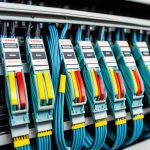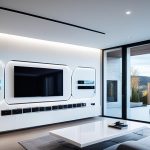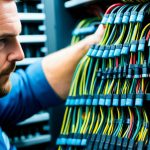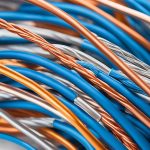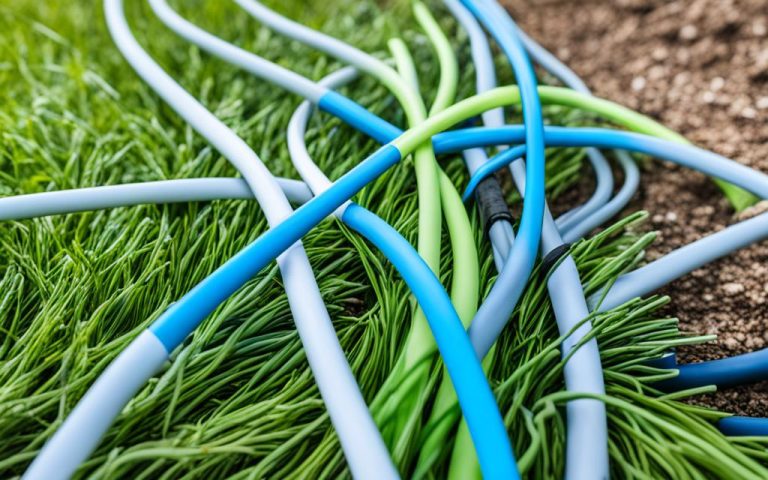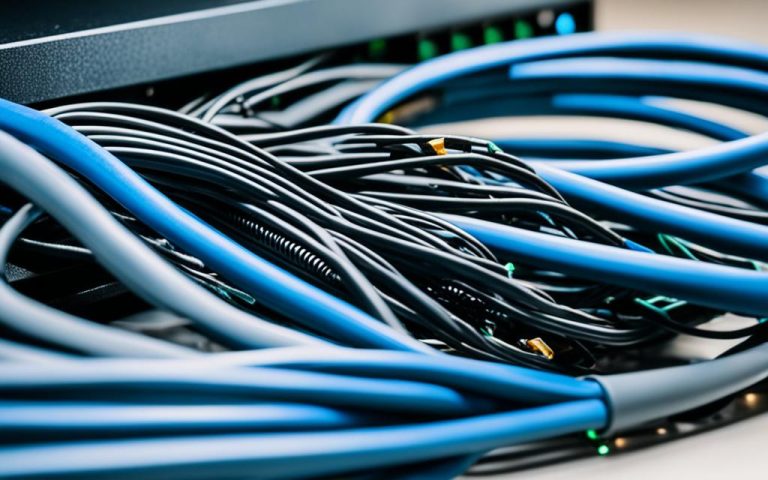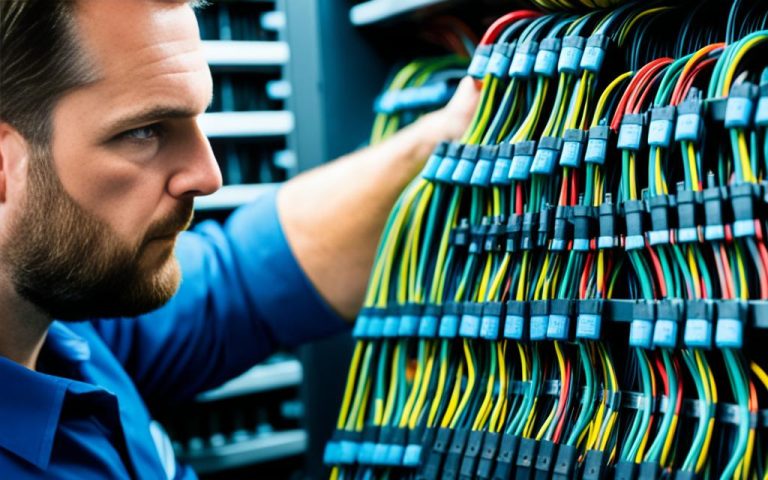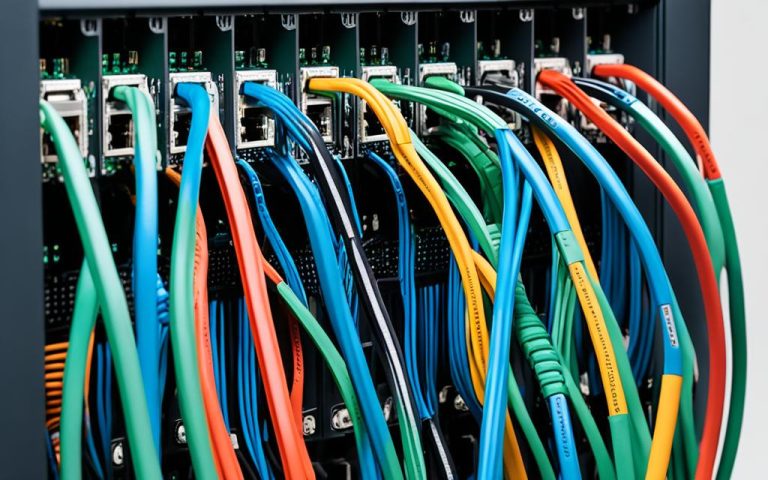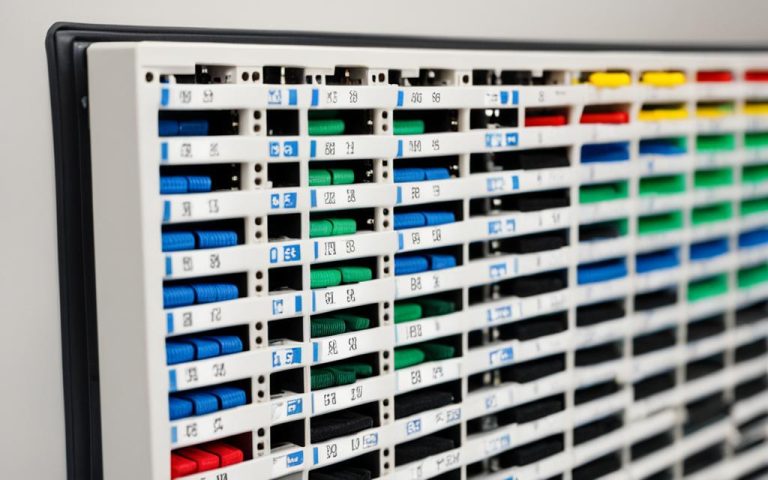Are you considering upgrading from CAT5 to CAT6 cabling? Look no further. This comprehensive guide will navigate you through the upgrade path, highlighting the benefits of CAT6 and the considerations involved.
CAT6 cabling offers a significant boost in data transfer speeds compared to its predecessor. While CAT5e can handle up to 1Gbps, CAT6 can support an impressive 10-40 Gbps, depending on the application and other factors.
But before you dive into the upgrade, it’s important to note that CAT6 10G equipment may be more expensive and less widespread. Additionally, the use of 10G is currently limited in most scenarios. However, the future-proof nature of CAT6 makes it a worthwhile investment.
Upgrading to CAT6 cabling after the walls are closed up can be more costly due to material expenses. It’s worth considering the number of runs needed and the potential benefits before making the decision.
Understanding Patch Panels
A patch panel, such as the 24-port Cat6 patch panel, serves as the central hub for managing and organizing the physical cabling infrastructure of a network. It allows for easy connections between incoming and outgoing lines of servers, routers, and switches. The back of a patch panel is where cables from various network locations converge, and proper termination is crucial for signal integrity. Patch panels streamline network design, facilitate troubleshooting, and simplify reconfiguration. They play a distinct role from switches, as switches direct traffic while patch panels guide cables to the switch. The use of keystones in patch panels adds flexibility to accommodate various connection types.
One key aspect of patch panels is their contribution to network cable management. They bring order to the complex network wiring, reducing cable clutter and improving organization. By neatly aligning and labeling the ports on the front face of the patch panel, network administrators can easily identify and map connections, making maintenance and troubleshooting more efficient.
Moreover, the patch panel’s design ensures its compatibility with Cat6 cabling, which offers higher performance and bandwidth compared to its predecessors. The Cat6 patch panel allows for seamless integration with Cat6 cables, enabling networks to take full advantage of the enhanced transmission capabilities. This compatibility ensures a future-proof network infrastructure that can handle the increasing demands of modern data transmission.
When it comes to designing a network, patch panels should be an integral part of the plan. By incorporating patch panels into the network architecture, administrators gain flexibility in managing different connections and reduce the risk of cable damage or disconnection during reconfigurations. Additionally, having a central patch panel makes it easier to troubleshoot network issues as it provides a clear and organized overview of the physical network setup.
Benefits of Patch Panels in Network Design
Implementing patch panels in network design offers several significant benefits:
- Simplified cable management: Patch panels enable neat and organized cable routing, reducing the risk of cable tangling and improving overall network aesthetics.
- Efficient troubleshooting: With patch panels, identifying and tracing connections becomes a streamlined process, helping network administrators quickly pinpoint and resolve issues.
- Flexibility for reconfiguration: Patch panels make it easy to add, remove, or rearrange connections without disrupting the entire network infrastructure, allowing for greater flexibility and scalability.
- Enhanced signal integrity: Proper termination and cable management on patch panels ensure optimal signal quality and reduce the chances of data loss or degradation.
- Future-proofing the network: By incorporating Cat6 patch panels, networks are prepared for higher data transfer speeds and can support emerging technologies without the need for further infrastructure upgrades.
By understanding the role and benefits of patch panels in network design, administrators can optimize their network infrastructure for efficient operation and minimize the chances of connectivity issues.
Patch Panel vs. Switch
| Patch Panel | Switch |
|---|---|
| Serves as a central hub for cable management | Directs network traffic |
| Organizes and labels physical connections | Routes data packets between devices |
| Facilitates troubleshooting and reconfiguration | Filters and forwards data based on MAC addresses |
The Anatomy of a Patch Panel
In a network infrastructure, patch panels play a vital role in managing and organizing the physical cabling. Understanding the anatomy of a patch panel is essential for effective network cable management.
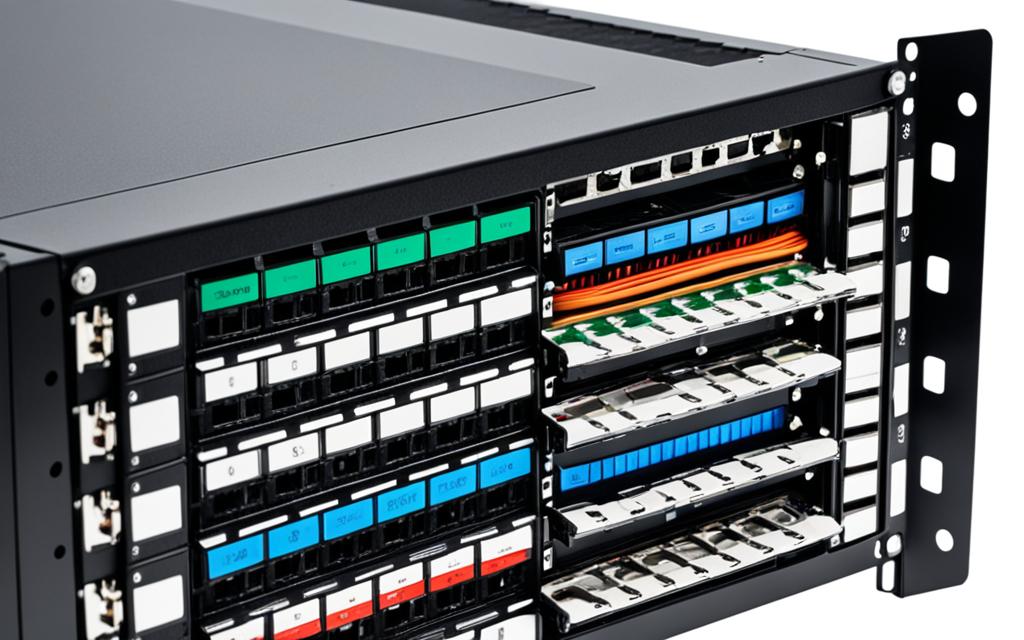
Front of a Patch Panel
The front face of a patch panel is where the action happens. It features a series of neatly aligned and labeled ports, serving as docking points for network cables. This organized setup allows for easy identification and mapping of connections. Whether it’s Ethernet, fiber optic, or other types of cables, the front of a patch panel provides the interface for making connections.
Back of a Patch Panel
While the front of a patch panel is where the cables are connected, the back is where they converge. It is crucial to understand the back of a patch panel for proper cable management. Here, you will find punch-down blocks or similar connectors for securing individual wires. The back provides a neat and organized termination point for the cables, ensuring signal integrity and reducing the risk of loose or messy connections.
Rack Mount Patch Panel for Streamlined Cable Management
For efficient use of space and streamlined cable management, a rack mount patch panel is the ideal choice. Designed to fit into a standard 19-inch server rack, it maximizes space utilization and allows for easy installation and maintenance. A neat and organized rack mount patch panel not only saves space but also makes it easier to troubleshoot and reconfigure network setups.
Proper patch panel cable management is crucial for maintaining a well-organized and functional network infrastructure. It ensures easy identification of cables, simplifies troubleshooting, and facilitates future expansions or modifications of the network.
| Advantages of a Rack Mount Patch Panel | Disadvantages of a Rack Mount Patch Panel |
|---|---|
| – Efficient use of rack space | – Requires a dedicated server rack |
| – Streamlined cable management | – Might not be suitable for small-scale setups |
| – Easy installation and maintenance | – Initial investment for the server rack |
Choosing the Right CAT6 Cabling
When considering an upgrade from CAT5 to CAT6 cabling, it is crucial to understand the differences between the two. CAT5e is suitable for shorter cable runs of up to 100ft, whereas CAT6 is designed to support higher speeds and more stringent cabling standards. This distinction is important when selecting the appropriate cabling solution for your network.
CAT5 and CAT5e cables are available in various lengths, ranging from pre-cut options of 30cm to 305m, to reels exceeding 1000ft. This flexibility allows you to choose the desired length based on the specific requirements of your network setup.
When it comes to cable colors, CAT5 and CAT5e commonly come in black, gray, and white. However, there is a wider variety of colors available in the market, enabling you to match the cabling to your aesthetic preferences or organize connections by color-coding.
Price is another factor to consider when choosing between CAT5 and CAT5e cables. The cost of cables can vary based on brand, quality, length, and additional shielding. It is essential to assess your budget and network requirements to make an informed decision that balances performance and affordability.
FAQ
What are the benefits of upgrading from CAT5 to CAT6 cabling?
Upgrading from CAT5 to CAT6 cabling offers significant benefits, including higher data transfer speeds. While CAT5e can only support 1Gbps, CAT6 can handle 10-40 Gbps, depending on the application and other factors.
Is CAT6 10G equipment more expensive and less widespread?
Yes, CAT6 10G equipment is more expensive and less widespread. Additionally, there is currently limited use for 10G in most scenarios.
Is it more expensive to upgrade to CAT6 after the walls are closed up?
Yes, upgrading to CAT6 after the walls are closed up can be more expensive due to material costs. However, negotiating the upgrade price may be possible for a smaller number of cables. The standard price for each drop is around 0.
What is the purpose of a patch panel?
A patch panel, such as the 24-port Cat6 patch panel, serves as the central hub for managing and organizing the physical cabling infrastructure of a network. It allows for easy connections between incoming and outgoing lines of servers, routers, and switches.
How do patch panels differ from switches?
Patch panels play a distinct role from switches, as switches direct traffic while patch panels guide cables to the switch. They streamline network design, facilitate troubleshooting, and simplify reconfiguration.
What is the purpose of the front face of a patch panel?
The front face of a patch panel features a series of ports, neatly aligned and labeled, serving as docking points for network cables. This organization allows for easy identification and mapping of connections.
How does a rack mount patch panel optimize network setups?
A rack mount patch panel is designed to fit into a standard 19-inch server rack, maximizing space and streamlining cable management. Cable patch panel management is crucial for organizing and troubleshooting network setups.
What are the differences between Cat5e and Cat6 cabling?
When upgrading to CAT6 cabling, it’s important to note that Cat5e is suitable for reasonably short runs of 100ft or less, while Cat6 can support higher speeds and more stringent cabling standards.
What are the common lengths and colors for Cat5 and Cat5e cables?
The length of Cat5 and Cat5e cables can vary from pre-cut lengths (30cm to 305m) to reels of 1000ft or more. Common colors for Cat5 and Cat5e cables include black, gray, and white, but a wider variety of colors is also available.
What factors affect the price of Cat5 and Cat5e cables?
Cable prices vary based on brand, quality, length, and additional shielding.

